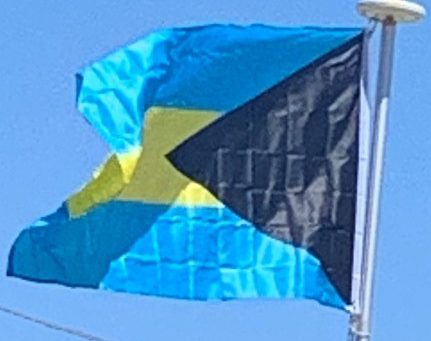In 1807, the British abolished the slave trade, followed by the United States the next year. During the following decades, the Royal Navy intercepted the trade; they resettled in the Bahamas thousands of Africans liberated from slave ships.

In the 1820s during the period of the Seminole Wars in Florida, hundreds of North American slaves and African Seminoles escaped from Cape Florida to the Bahamas. They settled mostly on northwest Andros Island, where they developed the village of Red Bays. From eyewitness accounts, 300 escaped in a mass flight in 1823, aided by Bahamians in 27 sloops, with others using canoes for the journey. This was commemorated in 2004 by a large sign at Bill Baggs Cape Florida State Park. Some of their descendants in Red Bays continue African Seminole traditions in basket making and grave marking.
The United States’ National Park Service, which administers the National Underground Railroad Network to Freedom, is working with the African Bahamian Museum and Research Center (ABAC) in Nassau on development to identify Red Bays as a site related to North American slaves’ search for freedom. The museum has researched and documented the African Seminoles’ escape from southern Florida. It plans to develop interpretive programs at historical sites in Red Bay associated with the period of their settlement in the Bahamas.
In 1818, the Home Office in London had ruled that “any slave brought to the Bahamas from outside the British West Indies would be manumitted.” This led to a total of nearly 300 slaves owned by US nationals being freed from 1830 to 1835. The American slave ships Comet and Encomium used in the United States domestic coastwise slave trade, were wrecked off Abaco Island in December 1830 and February 1834, respectively. When wreckers took the masters, passengers and slaves into Nassau, customs officers seized the slaves and British colonial officials freed them, over the protests of the Americans. There were 165 slaves on the Comet and 48 on the Encomium. The United Kingdom finally paid an indemnity to the United States in those two cases in 1855, under the Treaty of Claims of 1853, which settled several compensation cases between the two countries.

Slavery was abolished in the British Empire on 1 August 1834. After that British colonial officials freed 78 North American slaves from the Enterprise, which went into Bermuda in 1835; and 38 from the Hermosa, which wrecked off Abaco Island in 1840. The most notable case was that of the Creole in 1841: as a result of a slave revolt on board, the leaders ordered the US brig to Nassau. It was carrying 135 slaves from Virginia destined for sale in New Orleans. The Bahamian officials freed the 128 slaves who chose to stay in the islands. The Creole case has been described as the “most successful slave revolt in U.S. history”.
These incidents, in which a total of 447 slaves belonging to US nationals were freed from 1830 to 1842, increased tension between the United States and the United Kingdom. They had been co-operating in patrols to suppress the international slave trade. However, worried about the stability of its large domestic slave trade and its value, the United States argued that the United Kingdom should not treat its domestic ships that came to its colonial ports under duress as part of the international trade. The United States worried that the success of the Creole slaves in gaining freedom would encourage more slave revolts on merchant ships.
20th Century:
In August 1940, the Duke of Windsor was appointed Governor of the Bahamas. He arrived in the colony with his wife, the Duchess. Although disheartened at the condition of Government House, they “tried to make the best of a bad situation”. He did not enjoy the position, and referred to the islands as “a third-class British colony”.
